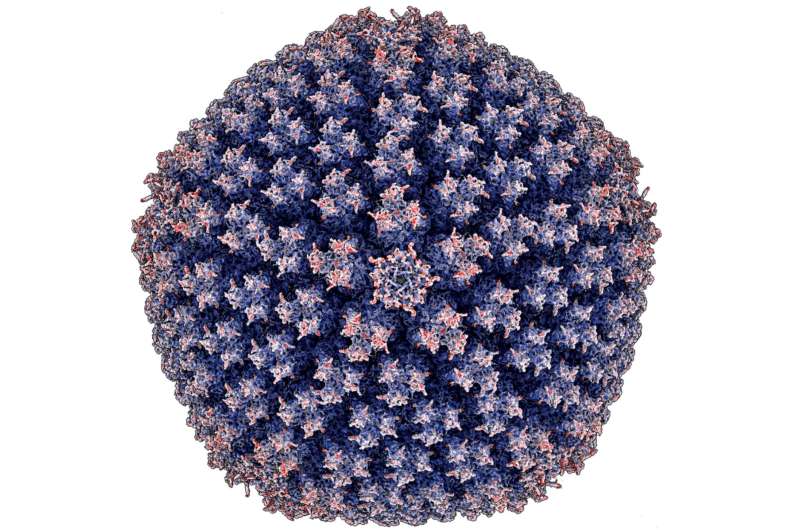Breakthrough on diarrhea virus opens up for new vaccines

Researchers at Umeå University in Sweden have for the first time at the atomic level succeeded in mapping what a virus looks like that causes diarrhea and annually kills about 50,000 children in the world. The discovery may in the long run provide the opportunity for completely new types of treatments for other viral diseases such as COVID-19.
"The findings provide an increased understanding of how the virus gets through the stomach and intestinal system. Continued research can provide answers to whether this property can also be used to create vaccines that ride 'free rides' and thus be given in edible form instead of as syringes," says Lars-Anders Carlson, researcher at Umeå University.
The virus that the researchers have studied is a so-called enteric adenovirus. It has recently been clarified that enteric adenoviruses are one of the most important factors behind diarrhea among infants, and they are estimated to kill more than 50,000 children under the age of five each year, mainly in developing countries.
Most adenoviruses are respiratory, that is, they cause respiratory disease, while the lesser-known enteric variants of adenovirus instead cause gastrointestinal disease. The enteric adenoviruses therefore need to be equipped to pass through the acidic environment of the stomach without being broken down, so that they can then infect the intestines.
With the help of the advanced cryo-electron microscope available in Umeå, the researchers have now managed to take such detailed images of an enteric adenovirus that it has been possible to put a three-dimensional puzzle that shows what the virus looks like right down to the atomic level. The virus is one of the most complex biological structures studied at this level. The shell that protects the virus' genome when it is spread between humans consists of two thousand protein molecules with a total of six million atoms.
The researchers were able to see that the enteric adenovirus manages to keep its structure basically unchanged at the low pH value found in the stomach. They could also see other differences compared to respiratory adenoviruses in how a particular protein is altered in the shell of the virus as well as new clues to how the virus packs its genome inside the shell. All in all, it provides an increased understanding of how the virus manages to move on to create disease and death.
"The hope is that you will be able to turn the ability that this unpleasant virus has to get to something that can instead be used as a tool to fight disease, perhaps even COVID-19. This is a step in the right direction, but it is still a long way off," says Lars-Anders Carlson.
Several of the new vaccines being tested against COVID-19 are based on genetically modified adenovirus. Today, these adenovirus-based vaccines must be injected to work in the body. If a vaccine could instead be based on enteric adenovirus, the vaccine might be given in edible form. This would, of course, facilitate large-scale vaccination.
The virus that the researchers have studied is called HAdV-F41. The study is published in the scientific journal Science Advances. It is a collaboration between Lars-Anders Carlson's and Niklas Arnberg's research groups at Umeå University.
More information: K. Rafie et al. The structure of enteric human adenovirus 41—A leading cause of diarrhea in children, Science Advances (2021). DOI: 10.1126/sciadv.abe0974





















